Like most of us who consider ourselves literate outdoorsmen, I’ve been mourning the death—and celebrating the life—of Jim Harrison. A writer of seemingly inexhaustible energy and imagination, he was our reigning poet of the appetites. One of these appetites, of course, was trout fishing, in particular trout fishing in that land lost in time called the Upper Peninsula of Michigan.
Harrison’s passing has served to remind me, too, of another Michigan Jim who not only loved the same things but, like Harrison, loved them to a degree that wasn’t strictly healthy: Jim Enger. Proprietor of one of the country’s first Orvis shops, former Au Sable River guide, and author of the wonderful story collection The Incompleat Angler, Enger died in December, 2013, at the age of 67. His passing went largely unnoticed by the fly fishing community, but then, many of his friends—including yours truly and Silvio Calabi, who’d been Jim’s editor at Fly Rod & Reel—didn’t become aware of it until literally months after the fact.
Incomprehensibly, the two Jims never met. But maybe it was a blessing in disguise. The result of these two forces of nature coming together might have been cataclysmic. Think Venkman and Spengler crossing the streams.
Here’s a snapshot of Jim Enger. He once wrote an article for Esquire about a dish one of his grandfathers had passed down to him. Called Steak Rolendeli, its main ingredients are an eight-pound slab of sirloin, four one-pound bricks of butter, and two canisters of salt. “Eat Your Heart Out,” the article was called.
Every opening weekend of the Michigan deer season Jim would prepare this dish for the crew that gathered at a certain northwoods cabin. After gorging on Steak Rolendeli washed down with alarming quantities of beer and burgundy, they’d cap off the evening by blazing away at leftover Halloween pumpkins with an array of ordnance that included German Lugers, military-issue .45s, and .38 snubbies.
Moderation wasn’t in Jim Enger’s DNA. But when you consider that he cut his teeth as an ad-man in the Detroit automotive industry, it could have hardly been otherwise. You either ran with the Big Dogs or you stayed on the porch—and when the Big Dogs did business it was over big, bloody steaks, ice-cold martinis, and hand-rolled cigars.
More Like This
Think Mad Men was fiction? Jim Enger lived it.
He knew when he needed to get out for the sake of his sanity, though. In the mid-‘70s he took a leap of faith and opened one of the country’s first Orvis shops, The Main Stream, in a Detroit suburb. The shop was ahead of the fly fishing curve, unfortunately, and Jim was forced to close it after just a couple years.
Still, there were compensations. One day a letter arrived from Ishpeming in the Upper Peninsula. The writer, whose name Jim didn’t recognize, was looking for 7X tippet. Jim sent him a couple spools along with a bill, and when the check arrived a few days later the guy enclosed a note mentioning that he was miffed at Orvis for not carrying his books in their catalogue.
That’s when Jim put two-and-two together and realized that John Voelker, his new customer from the U.P., and Robert Traver, the author of Trout Madness and Trout Magic—to say nothing of the best-selling Anatomy of a Murder—were one and the same.
Despite their 43-year age difference the former Michigan Supreme Court Justice and the erstwhile ad-man from Detroit soon became fast friends. John dubbed Jim “Jamus,” and until John’s death in 1991 the two spent countless happy hours together: fishing for “troutlings” at Voelker’s legendary Frenchman’s Pond, bombing around the U.P. in his ancient Jeep, telling tall tales…and always keeping an eye peeled for mermaids.
There was only one hard-and-fast rule at Frenchman’s: All other activities ceased at 4:00 p.m., without exception, for the observation of the cocktail hour. And the only cocktail allowed was a bourbon old-fashioned served in an extra-large jelly jar. Four old-fashioneds, according to Jim, would kill a fifth of bourbon.
“Am exercising my liver,” John once wrote to him, “in anticipation of your arrival.”
John and Jim exchanged dozens of chatty letters over the years, John’s invariably written on yellow legal paper in green felt-tip pen. Jim included excerpts from several of these missives in “The Master of Frenchman’s Pond,” the warm remembrance of John that appears in The Incompleat Angler. Published in 1996, it’s one of the funniest, truest, most refreshingly unpretentious collections of fly fishing stories out there.
A small review I wrote of TIA came to Jim’s attention, and he sent me a letter thanking me for the kind words. We exchanged a few notes, I drove over to the Au Sable to fish with him, and for the rest of Jim’s life we stayed in touch, steadily if not necessarily regularly. We e-mailed some, but mostly we talked on the phone—long, laughter-filled conversations that were pretty one-sided, because Jim did about 90% of the talking. He was a born raconteur and I learned that if I phoned him I needed to have 45 minutes, minimum, to devote to the call. An hour was better.
In no particular order we talked about fly fishing, bird hunting, dogs, food, women, and literature. It was always a kick to hear Jim’s stories about the fly fishing celebrities whose tracks he’d cut along the way: Voelker, of course, Jack Hemingway, Ernest Schwiebert, John Merwin, the list went on. Silvio Calabi sent P.J. O’Rourke, of National Lampoon and Rolling Stone fame, to Jim to learn to fly-fish. Miraculously, they both survived.
Like Harrison, Jim Enger loved good food, stiff drink, and smart, passionate women. (Oh, how he loved women!) And of course he loved wild trout and the places they inhabit—the Au Sable and its tributaries in particular.
Jim knew how to handle a fly rod—and what a fly rod he had to handle. A split-cane five-weight christened the “Jamus Special,” it was crafted by Michigan’s renowned R.W. Summers, commissioned by Jim’s friends on the occasion of his 50th birthday, and presented to him as the highlight of a long, loud, Chianti-drenched celebration at Detroit’s Roma Café. Jim treasured that rod, and he cast it the same way he wrote: beautifully, without ever overreaching and trying to wring more out of it than it was capable of.
Jim was a big guy—around 6’2”, I’d guess—and he accomplished the neat trick of seeming lanky and bearish at the same time. His torso was fairly thick, but it was framed by a pair of the most incongruously skinny arms I’ve ever seen. If the local fire department had needed someone to reach into a pipe to rescue a kitten, Jim would’ve been their man.
I’d send Jim stuff I’d written every now-and-then, sometimes asking for feedback, other times just because I thought he’d get a giggle out of it. But it was strictly a one-way street; other than his letters and e-mails, there was no writing forthcoming from Jim. I’d try to prod him into re-inking his quill, jabbing him with cracks like “You know, you used to be pretty good,” but he’d just say that he’d told the stories he needed to tell.
Jim did write one thing, though. A year or so before his death he sent me a color enlargement, about 10 by 14 inches. Suffused with an intense feeling of solitude and abstractly simple in composition, it shows a deepening sky, a band of steepled balsams, and an ellipse of mirrored water, its surface dimpled by a single chaste kiss.
On the back, Jim had written a caption, Haiku-like in its purity and economy of expression:
Magic time—Frenchman’s Pond.
A wild trout rises.




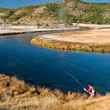
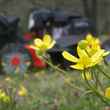








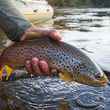
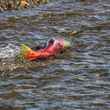




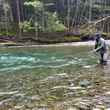



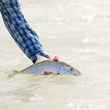
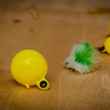


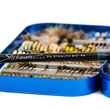
Comments
Kelli P Sullivan replied on Permalink
A truly wonderful piece, well-written and extremely enjoyable! I love reading of the old-timers, their humor and their quirks. Makes me wish I was born during a different time!
Pages